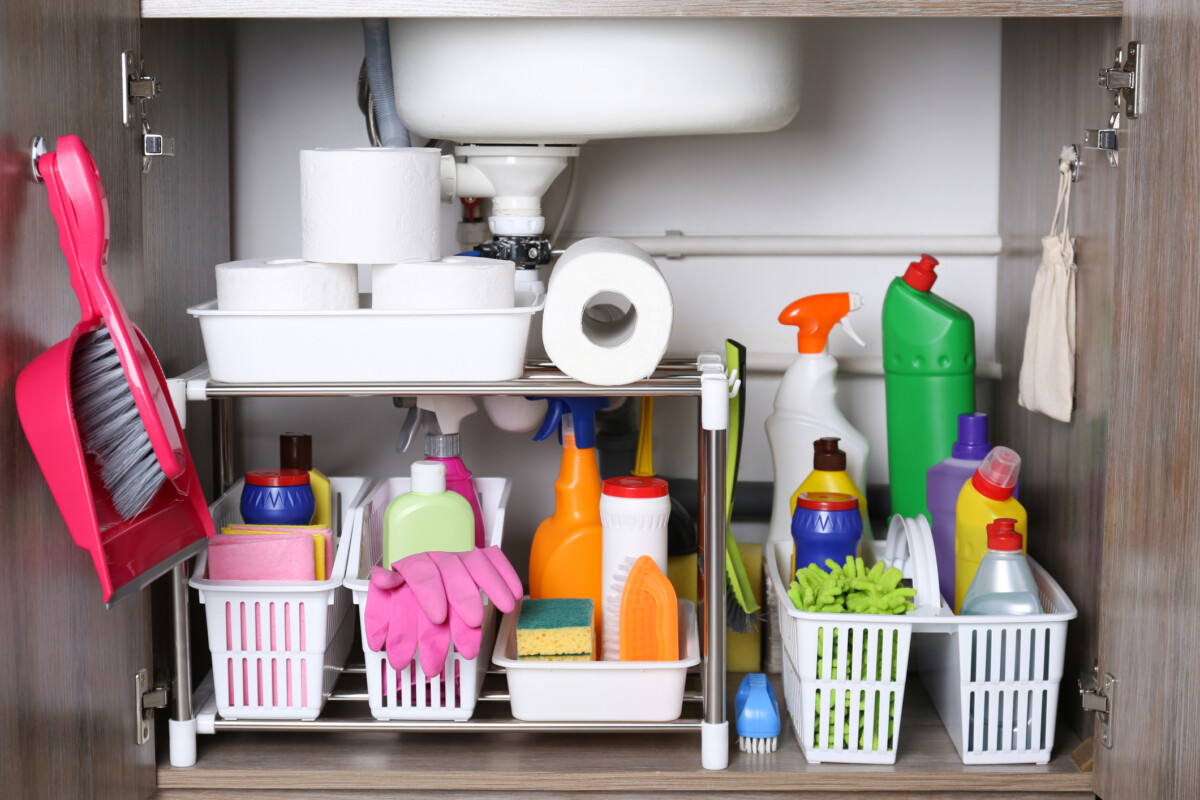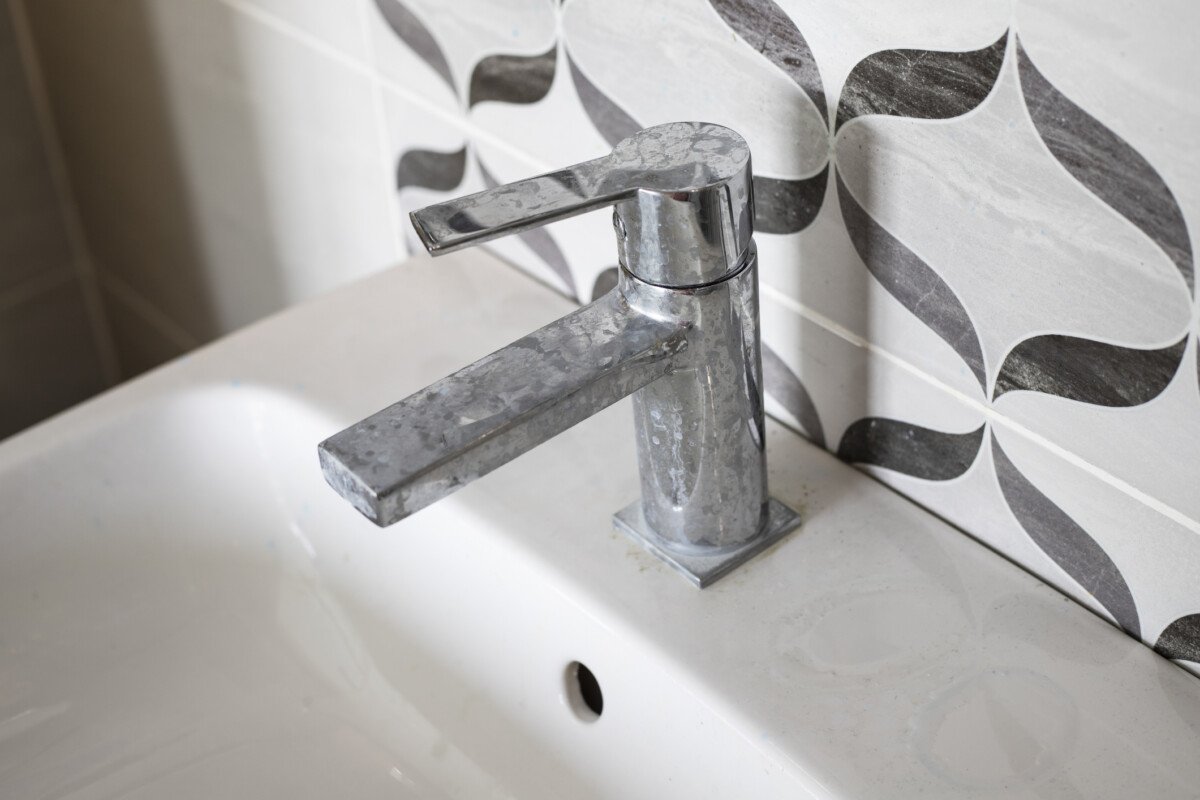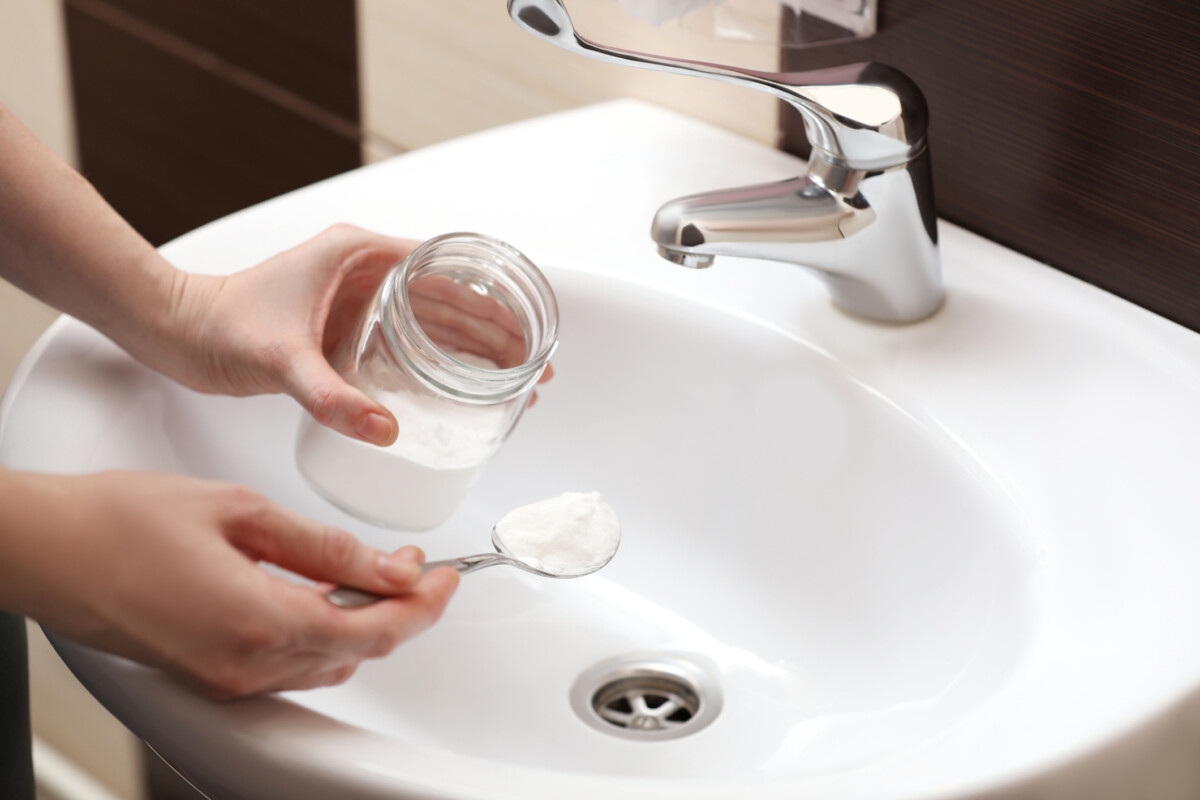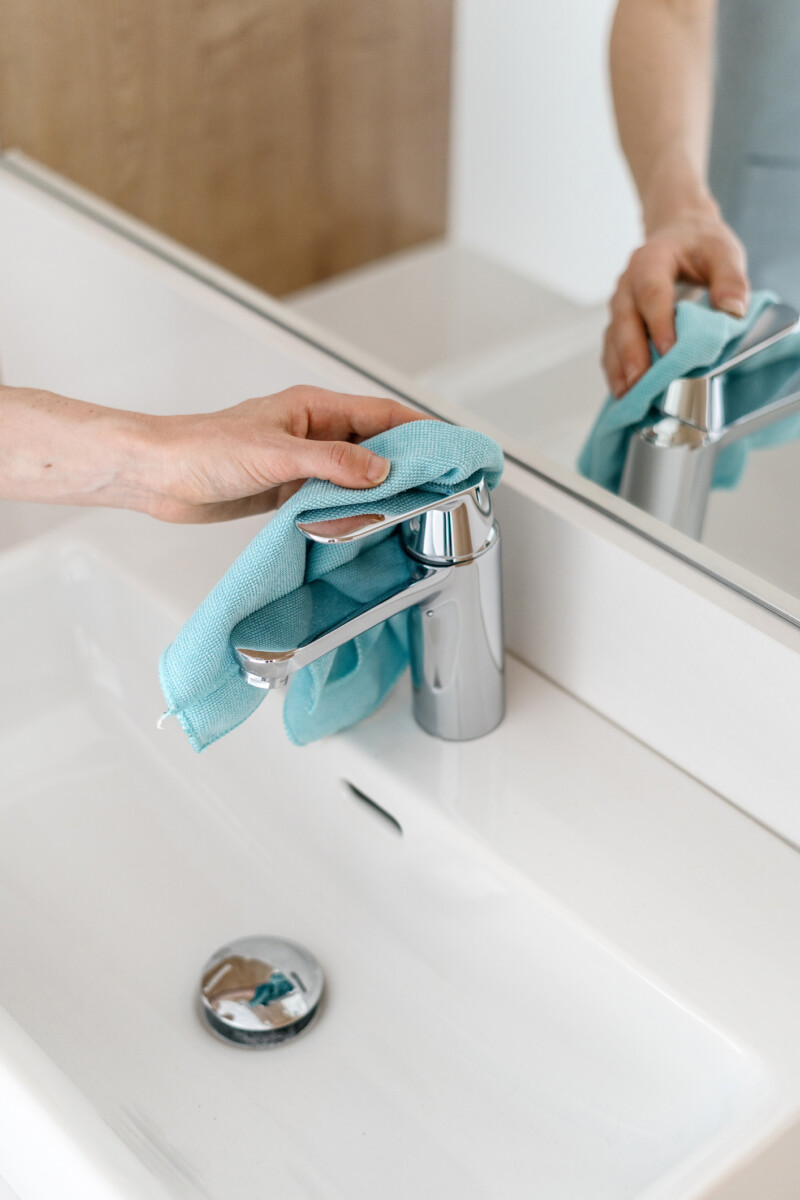How to Clean a Bathroom Sink: A Step-by-Step Guide

Wondering how to clean a bathroom sink properly? Sometimes it’s hard to properly clean a bathroom sink if you don’t have the right cleaning products and tools. Well, don’t worry, we’re here to help make cleaning your sink a breeze.
Having a clean sink is an absolute must; it helps to keep your bathroom looking fresh and bright. It’s also extremely important for hygiene reasons, as there’s nothing worse than a dirty sink. Dirt, residue and grime can easily build up over time if left unchecked. Sinks tend to collect all sorts of things, from soap scum to toothpaste marks and, in areas with hard water, limescale. But here’s the good news: regular cleaning not only restores shine, it also prevents stains and bacteria buildup. Here are some top tips on how to clean a bathroom sink.
Gather your cleaning supplies

Source: Liudmila Chernetska
Having the right tools and cleaners will make the process of cleaning your bathroom sink much quicker. We suggest:
- Soft cleaning clothes and sponges
- Baking soda
- White vinegar
- Mild washing-up liquid
- An eco bathroom cleaning liquid
- A microfibre cloth for drying and polishing
If you are looking for eco-friendly cleaning alternatives, then natural products like vinegar and baking soda work extremely well without the need for harsh chemicals.
Clear and rinse the sink
Before you start your clean prep, the area by removing any items around the sink, such as toothbrushes, soap dishes, nail brushes, and then give the sink a good rinse with warm water.
Rinsing the sink helps to remove any loose debris, dirt, dust, toothpaste splashes and standing water. Pay special attention to the edges around the taps and the overflow hole, where dirt can gather. Make sure you don’t let any water drip down the sides of your sink as this can cause a build-up of dampness.
Scrub the surface gently
Once your sink is prepped, you can start to clean. Sprinkle a small amount of baking soda and add water or vinegar to make a paste. Use a soft sponge or cloth to scrub gently to lift any dirt or residue. Make sure you are not using any equipment that can scratch or damage the surface.
Tackle limescale and hard water stains

Source: Hazel Ak
Once your sink has been scrubbed, we want to pay attention to limescale and hard water stains.
To remove these, we recommend you:
- Soak a cloth or paper towel in white vinegar or lemon juice
- Wrap this cloth around the affected area
- Leave it to sit for 10-15 minutes
- Scrub gently with a toothbrush, then rinse clean.
To avoid limescale and hard water stains, try cleaning your sink and taps with a microfibre cloth after you use your sink.
Clean the plughole and overflow

Source: Liudmila Chernetska
Areas that need a little extra attention when cleaning your bathroom sink are the plughole and the overflow. The plughole can collect grime, soap scum and cause unpleasant odours to develop over time.
Here is how to freshen the plughole:
-
- Pour a few tablespoons of baking soda down the plughole.
- Follow with a cup of white vinegar. It will fizz and help break down buildup.
- After 10–15 minutes, flush with a kettle of hot water to clear away debris.
Polish the taps and fixtures

Source: Brizmaker
Clean your taps with a cloth dipped into soapy warm water, then dry with a microfibre cloth to prevent streaks.
For metal or chrome taps, use white vinegar on a cleaning cloth to polish them. Products such as bleach should be avoided as the hard chemicals can tarnish the metal finishes.
Disinfect the sink
After you have cleaned your sink, you should spray the surface with a cleaner or a mixture of baking soda and vinegar. Then wipe the sink with a cloth to leave a fresh finish.
This step is extremely important for bathrooms shared by multiple people or family members.
Maintain a clean sink daily
Cleaning your bathroom sink doesn’t have to be a massive task. It is actually better to do quick, daily maintenance in order to prevent a buildup of dirt and limescale.
Try these tips daily:
- Avoid leaving any standing water or soap in the sink
- Always rinse the sink after use, especially after cleaning your teeth
- Wipe the taps to remove water splashes
- Once a week, give your sink a deeper clean following the steps above.
If you do these small steps every day, it can go a long way to keep your sink cleaner for longer and saves you more time in the long run.
Know how to clean different sink materials
There are many different sink materials and finishes that need slightly different care:
Ceramic and porcelain
Use gentle cream cleaners or a mixture of baking soda and water to clean these surfaces. Avoid scouring pads, stiff brushes or any harsh abrasives that could dull or damage the surface.
Stainless steel
Clean these surfaces using washing-up liquid, baking soda or a specific econ bathroom cleaner. Once again, avoid any cleaning instruments with harsh edges that could cause scratches and dry immediately with a microfibre cloth to avoid water marks.
Stone or marble
For stone and marble surfaces, you want to avoid vinegar, lemon juice and any other acidic products that can damage the finish. Stick to a pH-neutral cleaner only and soft clothes when cleaning these types of materials.
Wanting to upgrade your bathroom sink or your bathroom in general? Contact our team today to enquire about our design services, where we can upgrade your bathroom to ensure it is modern and accessible to suit your needs.
FAQs
What’s the best natural cleaner for a bathroom sink?
Baking soda and white vinegar are natural and easy to use on most surfaces. The only surface to avoid using these products on is natural stone.
How do I make my sink shine naturally?
We recommend always drying and buffing the surfaces after cleaning with a dry microfibre cloth. You can also use a small drop of olive oil or baby oil to add extra shine on stainless steel.
How do I remove stubborn stains from my sink?
For stubborn stains, mix a paste of baking soda and water. Apply to the stained areas and leave to stand for 10-15 minutes. Then scrub gently with a sponge and rinse clean.
How can I stop limescale around taps?
Prevent limescale from occurring by wiping your tapes dry after you use them and clean them weekly with a baking soda and vinegar mixture to dissolve mineral deposits.
How often should I deep-clean my bathroom sink?
We recommend deep cleaning your bathroom once a week for optimal freshness and hygiene, as well as quick wipe downs daily to maintain freshness.
Learning to clean your bathroom sink thoroughly is the best way to keep your space looking its best and at its most hygienic for longer. With a few simple supplies and regular care, not only can you prevent limescale and keep your bathroom clean and hygienic, you can also extend the lifespan of your fittings and keep your bathroom sink looking newer for longer.
Bathrooms should be practical and easy to maintain. At Premier Care in Bathing, we specialise in designing bathrooms that are modern and accessible. If you are thinking about updating your bathroom, please explore our amazing range of walk-in baths and walk-in showers. All are designed with comfort, accessibility and effortless upkeep in mind.
